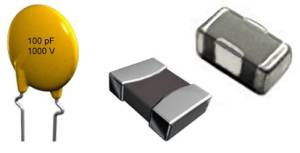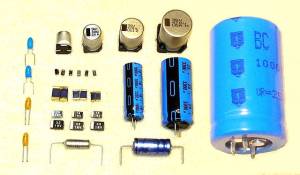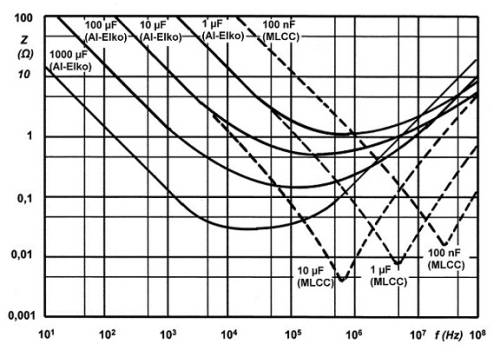Table of Contents
Capacitors
Used to store electrical charge. It is composed of two sheets of metals separated by a dielectric medium.
Capacitance is measured in Farad (F) but it is a large unit. Mostly used is pF, nF, µF or mF.
Types of capacitors
Class I capacitors have better accuracy and low volumetric efficiency whereas class III capacitors have low accuracy and high volumetric efficiency.
Ceramic capacitors
Ceramic capacitors do not have any polarity. The dielectric medium is composed of a thin ceramic layer.
Ceramic capacitors don't always have their capacitance indicated. Sometimes it's just a number. You can use a chart like this one to get the capacitor value
Electrolytic capacitors
Most of the electrolyte capacitors are polarized. Electrolytic capacitors are known to have a higher volumetric efficiency. This means a small capacitor is able to hold larger amount of charges than a ceramic capacitor of the same size.
If they are connected with the wrong polarity, they may become very hot and may even explode.
ESR
For electrolytic capacitors, the Equivalent Series Resistance (ESR) is an important concept. If the ESR is too high, then the current flow through the circuit would be too small. The figure below shows how the ESR (impedance) of a capacitor changes with resistance. Each curve shows different capacitance values:
Note that for each type of capacitor, there is a frequency at which the impedance is at a minimum. This frequency is the resonant frequency of the capacitor. Note that as the capacitance becomes larger, the resonant frequency becomes smaller.
Comparison
- Ceramic capacitor has two metal sheets at the terminals to store charges. The electrolytic capacitor has one metal sheet and an ionic liquid as the two terminals.
- Electrolytic capacitors are capable of holding more charges per volume than ceramic ones.
- Most of the electrolyte capacitors are polarized, but ceramic capacitors are never polarized.


